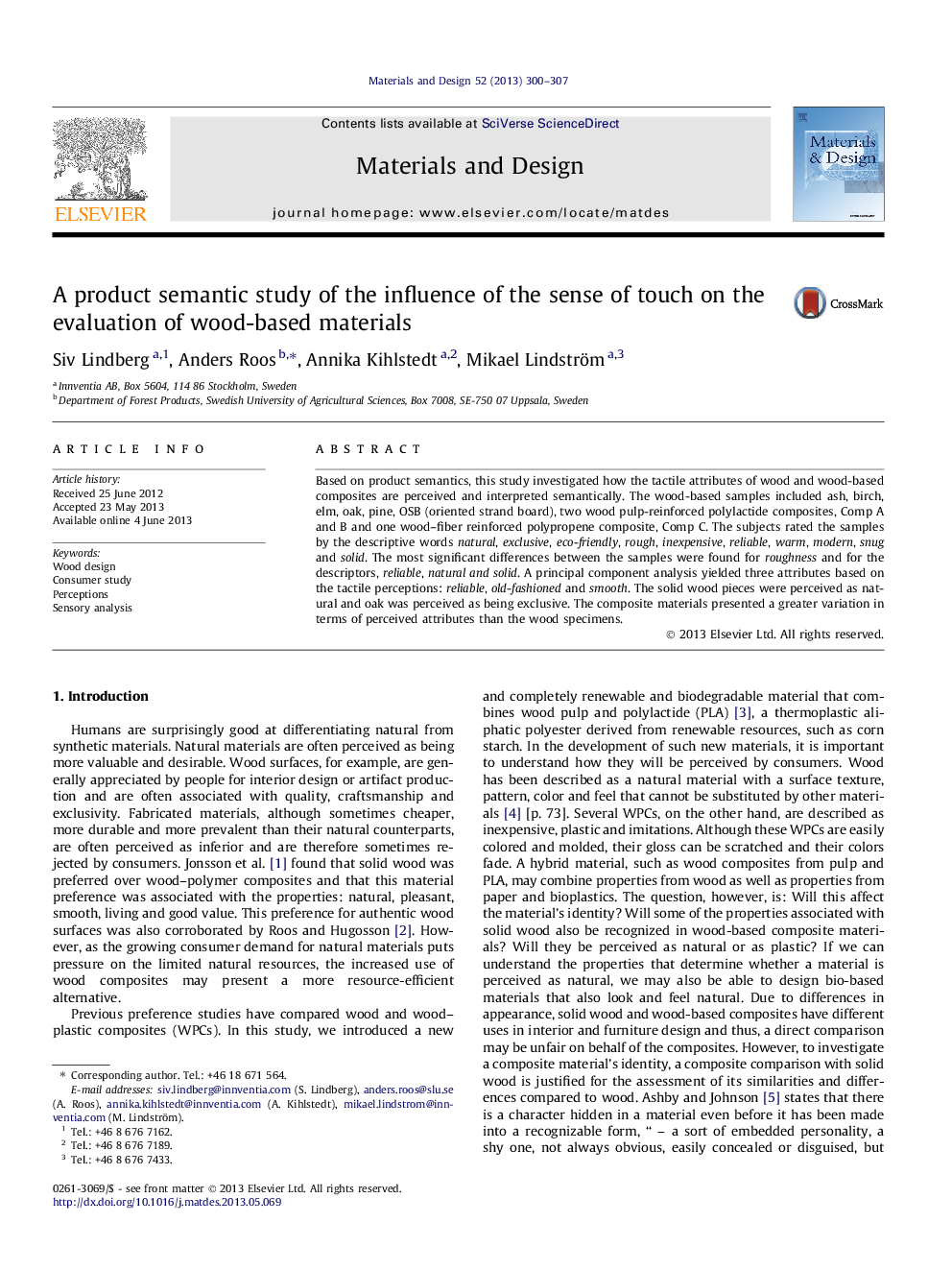| Article ID | Journal | Published Year | Pages | File Type |
|---|---|---|---|---|
| 7221163 | Materials & Design (1980-2015) | 2013 | 8 Pages |
Abstract
Based on product semantics, this study investigated how the tactile attributes of wood and wood-based composites are perceived and interpreted semantically. The wood-based samples included ash, birch, elm, oak, pine, OSB (oriented strand board), two wood pulp-reinforced polylactide composites, Comp A and B and one wood-fiber reinforced polypropene composite, Comp C. The subjects rated the samples by the descriptive words natural, exclusive, eco-friendly, rough, inexpensive, reliable, warm, modern, snug and solid. The most significant differences between the samples were found for roughness and for the descriptors, reliable, natural and solid. A principal component analysis yielded three attributes based on the tactile perceptions: reliable, old-fashioned and smooth. The solid wood pieces were perceived as natural and oak was perceived as being exclusive. The composite materials presented a greater variation in terms of perceived attributes than the wood specimens.
Related Topics
Physical Sciences and Engineering
Engineering
Engineering (General)
Authors
Siv Lindberg, Anders Roos, Annika Kihlstedt, Mikael Lindström,
